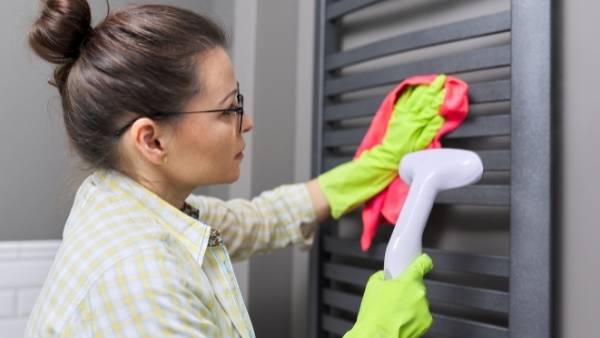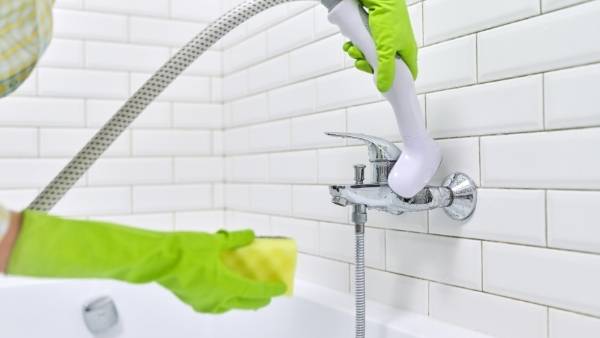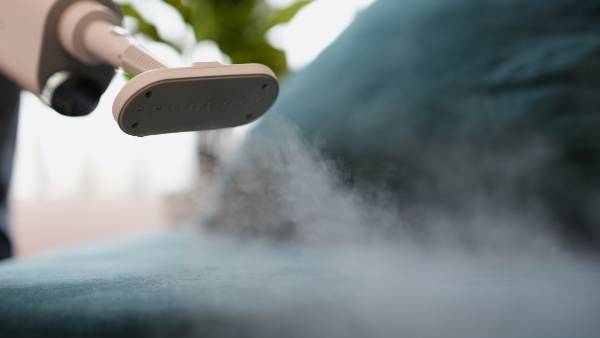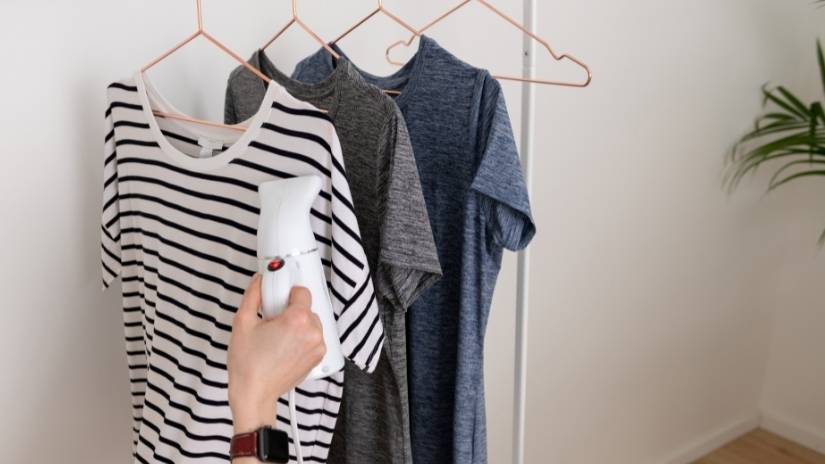Handheld steamers are incredibly compact and one of the best options for removing wrinkles from clothes. Their portability means they come in handy when you have an impromptu meeting or have to go on a last-minute trip, allowing you to smooth out wrinkled fabrics in a matter of minutes.
While a handheld garment steamer has become a great alternative to using a traditional iron (and eliminating the ironing board), it can also be used outside of eliminating wrinkles. One of its best uses is for cleaning household items such as your sofa, carpet, curtains, or blinds.
When it comes to acquiring a handheld steamer, Philips is a brilliant choice of brand. In fact, if you head over to our page consisting of the best Philips handheld steamers, you can see for yourself which model you might like.
If you have never thought of alternative uses for your steamer outside crease and wrinkle removal, keep reading to find out more.
1. Household Cleaning
The steam from a handheld clothes steamer can serve many cleaning purposes around the house. It can help you accomplish tasks ranging from disinfecting to sanitising contaminated spaces, without inviting in harmful chemicals.

Running a handheld steamer through your sofa or carpet allows it to break down mould, grime, or dust buildup. Let your steamer do the heavy-lifting during upholstery cleaning by initiating a deep-down cleaning regime your vacuum can’t handle. Even better, it will save you the energy of using heavy machines to remove small stains.
2. Eliminating Grease and Oil Buildup
Most steamers can generate a temperature level equal to or greater than 212 F or 100 Celsius. You can sanitise several sensitive areas around your house at this temperature level. However, this temperature level is most useful in your kitchen, especially around heavy appliances where there’s likely to be oil buildup.
The temperature range of these steamers means they can easily loosen up grease and oil build-ups on your kitchen counters, stovetops, and grill grates. Even better, this cleaning process is safer than using wire brushes, chemicals, or heavy detergents, which all pose health risks. Plus, loosening up the mess with a steamer allows you to clean in one swipe.
3. Sanitizing Your Bathroom
It is widely recommended that homeowners maintain a 30 – 50% humidity level in their homes. However, this figure is hard to maintain in moist areas like your bathroom. In most bathrooms, high humidity levels have been measured to be around 60% or higher. As a result, mould forms and multiplies over time.

For homeowners who can’t invest in a dehumidifier, garment steamers can be surprising saviours. This is because powerful steam can help you clean and sanitise ceramics and glass surfaces. Therefore, you can rely on it to eliminate stubborn stains, soap residues, and hair care product buildup.
You will be happy to know that your steamer can also remove grime on your shower door and curtains. This sanitisation process is vital if you have children in order to prevent a buildup of bacteria or viruses.
4. Cleaning Car Upholstery
The daily commute to work and trips with family members in your car can take a toll on your car’s upholstery. Unfortunately, using different products can pose a lot of risks to your car’s interior. This is why most car maintenance experts recommend sticking to proven methods such as steaming for car maintenance.
However, leveraging the service of a professional car maintenance company for upholstery steaming can be pricey. This is why using a handheld steamer will help you save money while making the steaming process stress-free.
The smallest handheld steamer with a power output of 1,000 watts can help remove caked mud, bugs, and road salt stuck on car exteriors such as windows, headlights, or tires.
5. Fast Wallpaper Removal
Most homeowners resort to scraping or pulling when it comes to removing old wallpaper. However, this method only occasionally works on temporary wallpaper rather than permanent ones. A few DIY tips have been suggested for doing the latter, one of which is using hot water to strip the paper off the wall. Those who use this method believe allowing hot water to seep through weakens the adhesive.
Unfortunately, this method poses the risk of burns and is truly unnecessary when you have a handheld steamer lying somewhere in your house. This is because running a clothing steamer around the wallpaper weakens its adhesive, allowing it to fall off the wall easily.
6. Cleaning Pet Items
When pets get dirty there’s a high risk of spreading bacteria from animals to humans. And unfortunately, little can be done to prevent our furry friends from getting themselves dirty, especially on nice long walks!

Rather than using harsh cleaners that pose a risk of irritation to your pet, make use of your handheld clothes steamer instead.
Steam cleaners can sanitise their bedding, cages, or crates, depending on the type of pet you have. Even areas of your furniture where your pet sleeps will get dirtier than the rest, so a handheld steamer is an ideal clean-up tool.
What Makes a Good Handheld Steamer?

Completing all the activities listed above requires a good handheld fabric steamer that possesses the following criteria:
Good Energy and Power Rating
Steamers that can multitask require a high power wattage. The higher the power output, the more complex tasks it can undertake. However, you should also consider its energy usage so it doesn’t end up eating into your electricity bill to much.
Positive Reviews
Go through past buyers’ comments about your desired handheld steamer on e-commerce stores such as Amazon or eBay. Stick to products with at least 4-star ratings to ensure a good buy.
Accessories
Prioritise steamers with extra accessories such as collapsible handles, brushes, and heat control.
Handheld Steamer Maintenance
If you will be using your portable steamer for anything more strenuous than removing wrinkles from clothes, then frequent maintenance may be required. This is because activities such as discolouration or sanitation against household particles will leave the nozzle filled with solid deposits.
Learn how to clean your steamer in 5 simple steps:
- Start by unplugging the steamer and proceed to empty the water tank.
- Look through the nozzle to observe any buildup and scrape it off with a metal file if you find any.
- Remove lingering residues around the nozzle with a descaling solution such as EcoDecalk.
- Prepare one part vinegar and two parts water solution in a separate tank and let the steamer head sit in it for 30 minutes.
- Take the steamer out of the solution and immerse the head into a bowl filled with clean water. You will know you’ve done a perfect job if all the small nozzles are clear.
Precautions When Using a Steamer on Fabric
When using a steamer on bedding, carpet, sofa, curtains, or car seats, the material must be steam-friendly. Delicate fabrics designed for dry clean only can be easily damaged by continuous steam. Therefore, if you find a material labelled “dry clean only”, it may be a sign that you should keep your hand-held steamer away from them.
In terms of using a steamer around your kitchen, experts recommend staying clear of freshly painted surfaces, unsealed floors, and finished woods.
It is important to only use distilled water in your hand held steamer and to avoid using tap water. Tap water can cause corrosion and shorten the life of your garment steamer, particularly in hard water areas.
Final Thoughts
Are you surprised how much you can achieve simply by owning a handheld steamer? It is amazing to think of all the different uses other than just steaming clothes and fabrics.

I am a content strategist and the administrator of this website. Professionally, I am an assistant Electronics professor at the University of Chester. I love to read about my profession and have a lot of interest in various home electronics appliances. Freely contact us if you have any queries regarding steam irons and other electronic devices.

